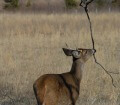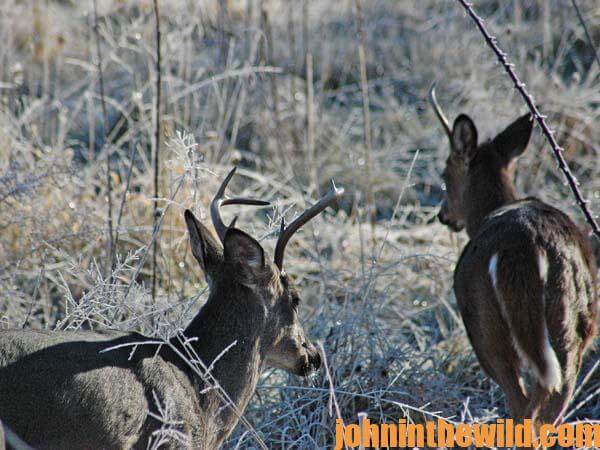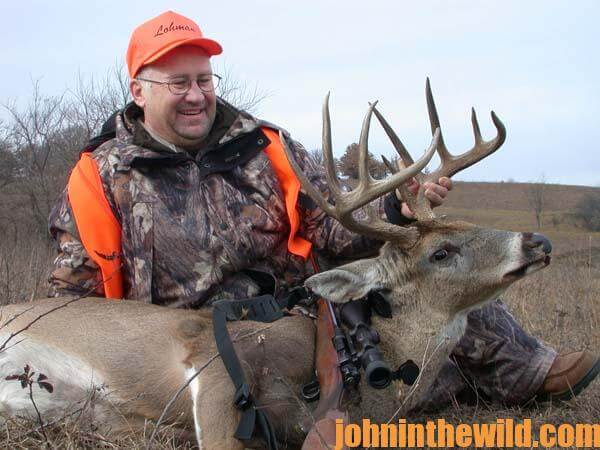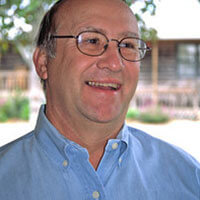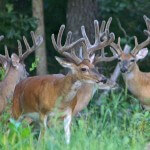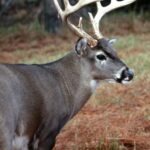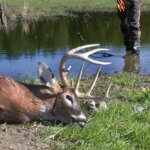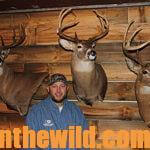John’s Note: What can you learn about deer from antlers? Do bucks grow new antlers each year? If a buck’s an 8-point deer one year, will he be a 9 point the next year? What causes some deer to have high, wide-racked antlers, while other deer may have narrow, spindly antlers? These are just a few of the questions we posed some years ago to two of the nation’s leading wildlife scientists – Dale Sheffer, the then Director of the Bureau of Wildlife Management for the State of Pennsylvania, and Dr. James G. Teer, today the Director Emeritus of the Welder Wildlife Foundation, in Sinton, Texas.
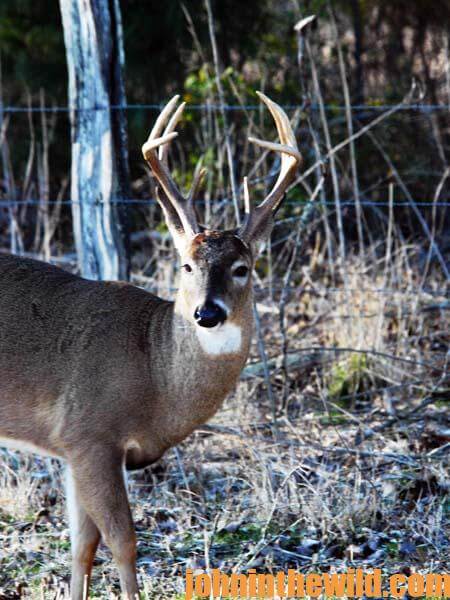 Another major concern of sportsmen is the effect of overpopulation on antler development.
Another major concern of sportsmen is the effect of overpopulation on antler development.
“Overpopulation will mean a decrease of the deer’s food supply, because too-many deer for the land to support means all the deer are on short rations,” Teer says. “Overpopulation will result in less antler development and smaller-bodied bucks.”
Sheffer mentioned that generally more deformed antlers will be present in an overpopulated deer herd, since competition for food is so great. “Some parts of Pennsylvania home more than 200 deer per square mile. When this occurs, unless supplemental feeding is practiced, the herd will have stunted deer with smaller-quality racks, because these deer do not get enough nutrition by the time they’re weaned to put on heavy racks. In some sections of Pennsylvania, 2-1/2- and 3-1/2-year-old bucks only may have 3-1/2-inch spikes. If the herd size is reduced, than the more food the deer on specific lands have, the larger the deer will grow, and the heavier the buck’s antlers will be. That’s why big deer come from states like Maine where you only may see one deer during a week of hunting, but that deer may be a large buck with heavy antlers.”
Teer suggests the most-effective way to produce more bucks with heavy antlers is to make sure the habitat is right for producing big bucks with trophy racks, including plenty of food, particularly in the winter.
“Also be certain you harvest a sufficient number of animals to keep the deer herd in balance.
When the carrying capacity of the land reaches a point where competition exists for food among the deer and also between the deer and the domestic livestock, antler development and body weights will go down. Too, that food must be within easy access of the deer. The more-nutritious food a deer has to eat, the better antlers he’ll have.”
Yet another major controversy is whether or not supplemental feeding of deer will increase antler size.
Some people think supplemental feedings will increase the antler size of deer.
Biologists know this is true of deer in captivity. But if you’re feeding deer in the wild, supplemental feeding can be terribly expensive, since the supplemental food can also be eaten by other animals such as raccoons and porcupines. However, planting food crops is a cheaper, more-effective way of feeding deer than pouring food out on the ground and hoping the deer will eat it. Alfalfa and ladino clover are excellent crops you can plant for deer. In my part of the country, alfalfa is one of the best foods for deer. When possible, the hunter needs to increase the amount of nutrition in the food the deer on his hunting lands has to eat.”
According to Dr. Teer, a better approach to deer management than putting out food supplements is to manage the deer’s home range the way it is.
“For instance, there are regions in south Texas that are deficient in phosphorous. To be sure deer get this mineral, you can add phosphorous to the deer’s water supply or in blocks to the deer’s feed. However, not many scientific studies have proved this management tool is appropriate for increasing the general health of deer. I believe planting food crops – cereal grains like winter oats, wheat and rye as well as clover – during certain seasons of the year when the habitat is in its worst condition, can increase the nutritional level of the deer. At this time of year, the deer are already in hard antler. But by improving their body conditions during the winter months, then when spring arrives, the deer will be in much better shape for growing larger antlers than they will have been if they’ve come through the winter in poor condition.”
Although hunters search for large, high, wide, heavy antlers, I’m amazed at how little I actually knew about how antlers grow and develop, and what factors must be present to produce trophy racks in deer before I interviewed experts Dr. Teer and Dale Sheffer.
To learn more about deer hunting, you can get John E. Phillips’ Kindle eBooks, “How to Hunt Deer Up Close: With Bows, Rifles, Muzzleloaders and Crossbows,” “PhD Whitetails: How to Hunt and Take the Smartest Deer on Any Property,” “How to Take Monster Bucks,” and “How to Hunt Deer Like a Pro,” or to prepare venison, get “Deer & Fixings.” Click here to get these books.
Share this page with a friend!
John Phillips, winner of the 2012 Homer Circle Fishing Award for outstanding fishing writer by the American Sportfishing Association (ASA) and the Professional Outdoor Media Association (POMA), the 2008 Crossbow Communicator of the year and the 2007 Legendary Communicator chosen for induction into the National Fresh Water Hall of Fame, is a freelance writer (over 6,000 magazine articles for about 100 magazines and several thousand newspaper columns published), magazine editor, photographer for print media as well as industry catalogues (over 25,000 photos published), lecturer, outdoor consultant, marketing consultant, book author and daily internet content provider with an overview of the outdoors.

